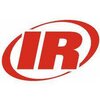
i
Uniparts
Group
Filter interviews by
Uniparts Group Interview Questions and Answers
12 Interview questions
Addressing customer special requirements involves understanding, communication, and tailored solutions to enhance satisfaction.
Listen actively to customer needs to fully understand their requirements.
Document special requests to ensure clarity and avoid misunderstandings.
Communicate regularly with the customer about progress and any challenges.
Provide personalized solutions, such as customized products or services...
To reduce materials processing rejections, focus on supplier quality, implement strict quality control measures, provide training to employees, and conduct regular audits.
Improve supplier quality by selecting reliable suppliers and conducting regular quality checks
Implement strict quality control measures throughout the processing stages to catch any defects early on
Provide training to employees on proper handling...
A rectifier is an electrical device that converts alternating current (AC) to direct current (DC).
Converts AC to DC
Used in power supplies and electronic devices
Types include half-wave, full-wave, and bridge rectifiers
Diodes are commonly used in rectifiers
To convert AC current to DC current, a rectifier is used to change the direction of current flow.
Use a rectifier to change the direction of current flow from alternating to direct
Rectifiers can be half-wave or full-wave depending on the application
Examples of rectifiers include diode rectifiers and bridge rectifiers
Heat treatment process involves heating and cooling metals to alter their physical and mechanical properties.
Heat treatment is used to improve hardness, strength, toughness, and ductility of metals.
Common methods include annealing, quenching, tempering, and normalizing.
Annealing involves heating the metal to a specific temperature and then slowly cooling it to make it softer and more ductile.
Quenching involves rap...
There are 5 levels in PPAP (Production Part Approval Process).
Level 1: Submission of Part Submission Warrant (PSW)
Level 2: Submission of PSW with product samples
Level 3: Submission of PSW with product samples and supporting data
Level 4: Submission of PSW with product samples and supporting data, along with customer approval
Level 5: Submission of PSW with product samples and supporting data, along with customer app...
There are 5 phases of APQP: Planning, Product Design, Process Design, Product and Process Validation, and Feedback, Assessment, and Corrective Action.
Phase 1: Planning involves defining the project scope, objectives, and timeline.
Phase 2: Product Design focuses on creating the product design based on customer requirements.
Phase 3: Process Design involves developing the manufacturing process to produce the product.
...
PFMEA stands for Process Failure Mode and Effects Analysis, a technique used to identify and prioritize potential failure modes in a process.
PFMEA helps in identifying potential failure modes in a process
It assesses the severity, occurrence, and detection of each failure mode
Risk priority numbers (RPN) are calculated to prioritize the failure modes for corrective actions
Examples include identifying potential failu...
By optimizing processes and automating tasks, manpower can be reduced while maintaining productivity.
Identify tasks that can be automated
Implement lean manufacturing principles
Use technology to streamline processes
Cross-train employees to increase flexibility
Implement a continuous improvement program
Use data analysis to identify areas for improvement
Cycle time is the total time to complete a process, while takt time is the available time per unit to meet customer demand.
Cycle time is the time it takes to complete one cycle of a process, including both value-added and non-value-added activities.
Takt time is the available time per unit to meet customer demand, calculated by dividing the available production time by the customer demand.
Cycle time can be measured...
Uniparts Group Interview Experiences
18 interviews found
I applied via Company Website and was interviewed in Nov 2024. There were 3 interview rounds.
With
My experience in30 years
Interview Preparation Tips
I applied via Walk-in and was interviewed in Aug 2024. There were 2 interview rounds.
(3 Questions)
- Q1. What is rectifier
- Ans.
A rectifier is an electrical device that converts alternating current (AC) to direct current (DC).
Converts AC to DC
Used in power supplies and electronic devices
Types include half-wave, full-wave, and bridge rectifiers
Diodes are commonly used in rectifiers
- Q2. Convert ac current to de current
- Ans.
To convert AC current to DC current, a rectifier is used to change the direction of current flow.
Use a rectifier to change the direction of current flow from alternating to direct
Rectifiers can be half-wave or full-wave depending on the application
Examples of rectifiers include diode rectifiers and bridge rectifiers
- Q3. What is vcb how-to maintenance
- Ans.
VCB stands for Vacuum Circuit Breaker, a type of circuit breaker that uses vacuum as the arc quenching medium.
VCB is used to interrupt fault currents in electrical systems.
Maintenance of VCB involves regular inspection of contacts, insulation resistance testing, and lubrication of moving parts.
Cleaning of VCB contacts is essential to ensure proper operation and prevent arcing.
Regular testing of VCB's operating mechanis...
(2 Questions)
- Q1. Last CTC and current CTC discuss
- Q2. HR give me 30% hick
- Ans.
The HR is requesting a 30% salary increase.
Discuss the reasons why you believe you deserve a 30% raise based on your performance and contributions to the company.
Provide examples of successful projects you have completed or improvements you have made that justify the salary increase.
Highlight any additional skills or certifications you have obtained since your last salary review that make you more valuable to the compa...
Interview Preparation Tips
- What is mttr
- PLC
- 5S System
- TPM Activities
- VCB
- Transformers
(2 Questions)
- Q1. How to address customer special requirements.
- Ans.
Addressing customer special requirements involves understanding, communication, and tailored solutions to enhance satisfaction.
Listen actively to customer needs to fully understand their requirements.
Document special requests to ensure clarity and avoid misunderstandings.
Communicate regularly with the customer about progress and any challenges.
Provide personalized solutions, such as customized products or services.
Foll...
- Q2. 8D methodology for problem solving
Interview Preparation Tips
I applied via Company Website and was interviewed in Jul 2024. There was 1 interview round.
(2 Questions)
- Q1. Induction motor
- Q2. Induction Transformer
Interview Preparation Tips
- Induction Motors
- Induction Transformer
- PLC
- VFDS
- control
(1 Question)
- Q1. RCA, Counter measures, Customer Complaints,8D
(2 Questions)
- Q1. Parts per Milllion
- Ans.
Parts per million (ppm) is a unit of measurement used to describe the concentration of a substance in a solution.
PPM is used to express very small concentrations of substances in a solution.
1 ppm is equivalent to 1 part of solute for every 1 million parts of solution.
PPM is commonly used in environmental monitoring, water treatment, and chemical analysis.
- Q2. Kaizens Poka yoke
(1 Question)
- Q1. All interview question were related to trade, as I am mechanical engineer the interviewer asked me all the questions related to mechanical .
I applied via Recruitment Consulltant and was interviewed in Dec 2023. There was 1 interview round.
(1 Question)
- Q1. About experience, mfg processes, QA methodologies
Interview Preparation Tips
I applied via Company Website and was interviewed in May 2023. There were 2 interview rounds.

(5 Questions)
- Q1. What you know about heat treatment process
- Ans.
Heat treatment process involves heating and cooling metals to alter their physical and mechanical properties.
Heat treatment is used to improve hardness, strength, toughness, and ductility of metals.
Common methods include annealing, quenching, tempering, and normalizing.
Annealing involves heating the metal to a specific temperature and then slowly cooling it to make it softer and more ductile.
Quenching involves rapidly ...
- Q2. Welding knowledge
- Q3. What is PFMEA technique
- Ans.
PFMEA stands for Process Failure Mode and Effects Analysis, a technique used to identify and prioritize potential failure modes in a process.
PFMEA helps in identifying potential failure modes in a process
It assesses the severity, occurrence, and detection of each failure mode
Risk priority numbers (RPN) are calculated to prioritize the failure modes for corrective actions
Examples include identifying potential failures i...
- Q4. How many Phases of APQP
- Ans.
There are 5 phases of APQP: Planning, Product Design, Process Design, Product and Process Validation, and Feedback, Assessment, and Corrective Action.
Phase 1: Planning involves defining the project scope, objectives, and timeline.
Phase 2: Product Design focuses on creating the product design based on customer requirements.
Phase 3: Process Design involves developing the manufacturing process to produce the product.
Phase...
- Q5. How. Many level are there in PPAP
- Ans.
There are 5 levels in PPAP (Production Part Approval Process).
Level 1: Submission of Part Submission Warrant (PSW)
Level 2: Submission of PSW with product samples
Level 3: Submission of PSW with product samples and supporting data
Level 4: Submission of PSW with product samples and supporting data, along with customer approval
Level 5: Submission of PSW with product samples and supporting data, along with customer approval...
(1 Question)
- Q1. About your self, CNC ,VMC

(1 Question)
- Q1. Technical question related to department For Quality - Tolerance, QC tools
(1 Question)
- Q1. Family details Job background
Interview Preparation Tips
Top trending discussions






Uniparts Group Interview FAQs
The duration of Uniparts Group interview process can vary, but typically it takes about less than 2 weeks to complete.
Tell us how to improve this page.
Uniparts Group Interviews By Designations
- Uniparts Group Engineer Interview Questions
- Uniparts Group Senior Engineer Interview Questions
- Uniparts Group Industrial Engineer Interview Questions
- Uniparts Group Maintenance Engineer Interview Questions
- Uniparts Group Executive Interview Questions
- Uniparts Group Team Manager Interview Questions
- Uniparts Group Assistant General Manager Interview Questions
- Uniparts Group Design Engineer Interview Questions
- Show more
Interview Questions for Popular Designations
Overall Interview Experience Rating
based on 28 interview experiences
Difficulty level
Duration
Interview Questions from Similar Companies
Uniparts Group Reviews and Ratings
based on 373 reviews
Rating in categories
6-8 Yrs
Not Disclosed
|
Engineer
84
salaries
| ₹2.2 L/yr - ₹6.5 L/yr |
|
Assistant Manager
78
salaries
| ₹4.7 L/yr - ₹10.5 L/yr |
|
Senior Engineer
69
salaries
| ₹4.2 L/yr - ₹7.5 L/yr |
|
Assistant Engineer
45
salaries
| ₹2.2 L/yr - ₹3.2 L/yr |
|
Production Engineer
37
salaries
| ₹1.2 L/yr - ₹6 L/yr |

Sulzer

Kirloskar Pneumatic

Texmo Industries

Nash Industries
- Home >
- Interviews >
- Uniparts Group Interview Questions













